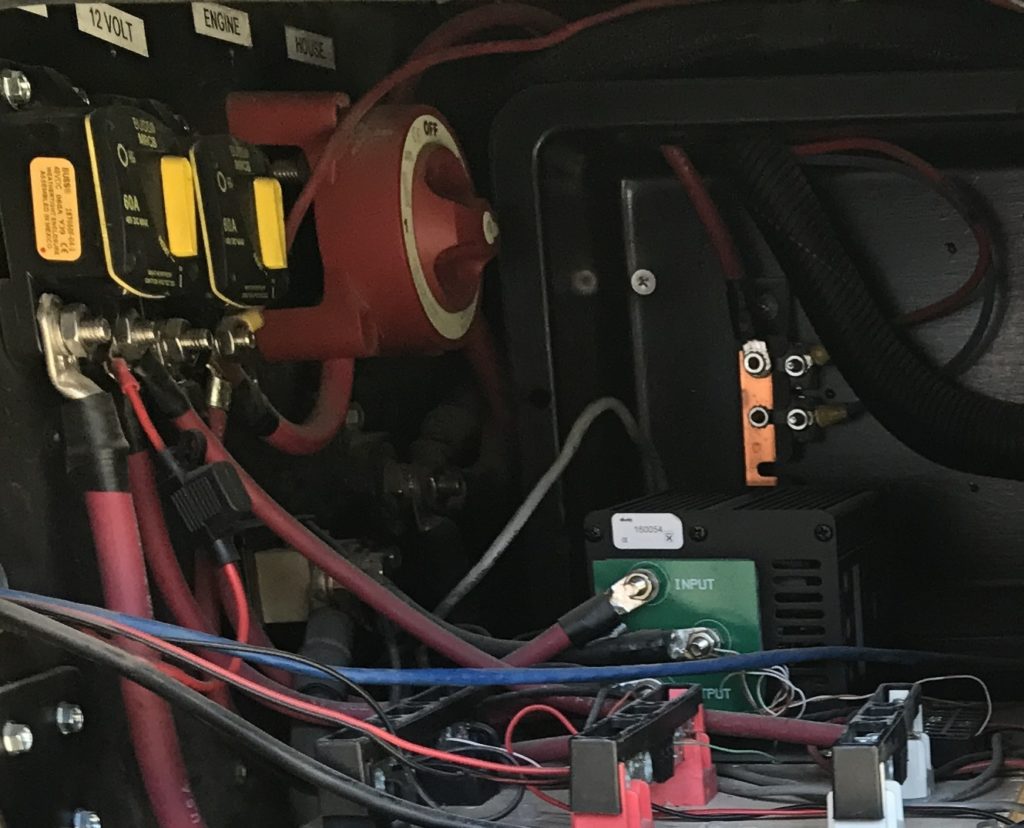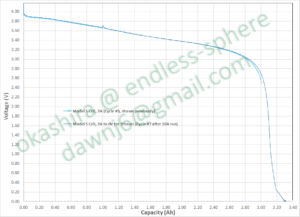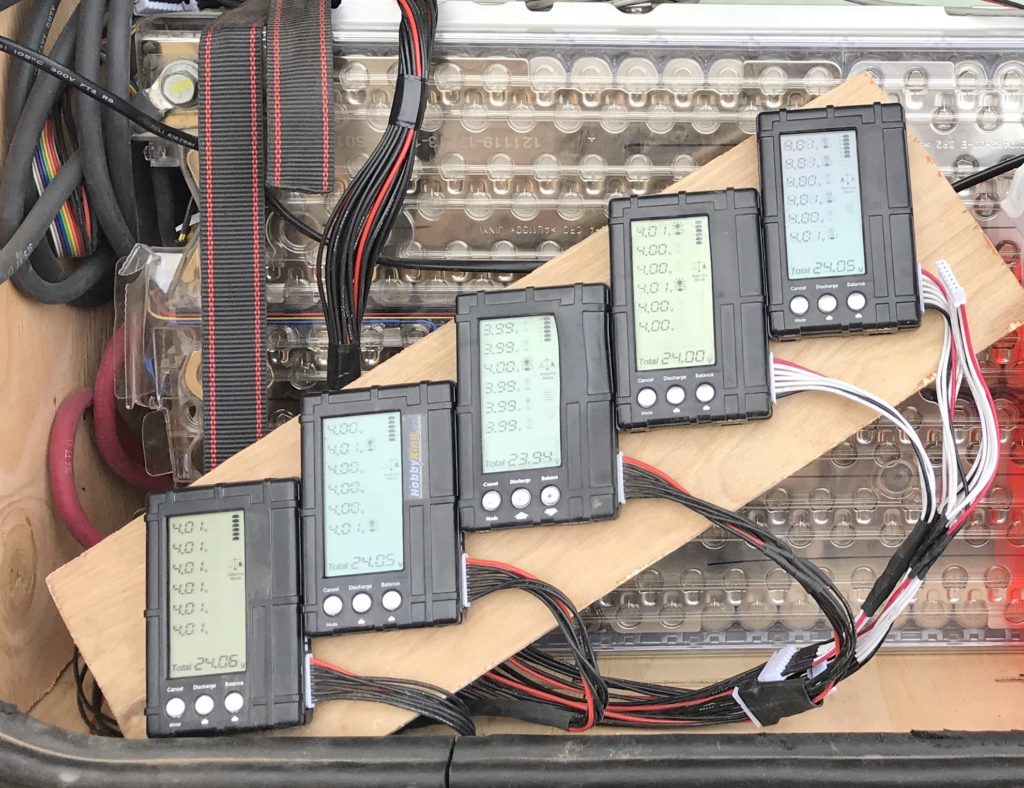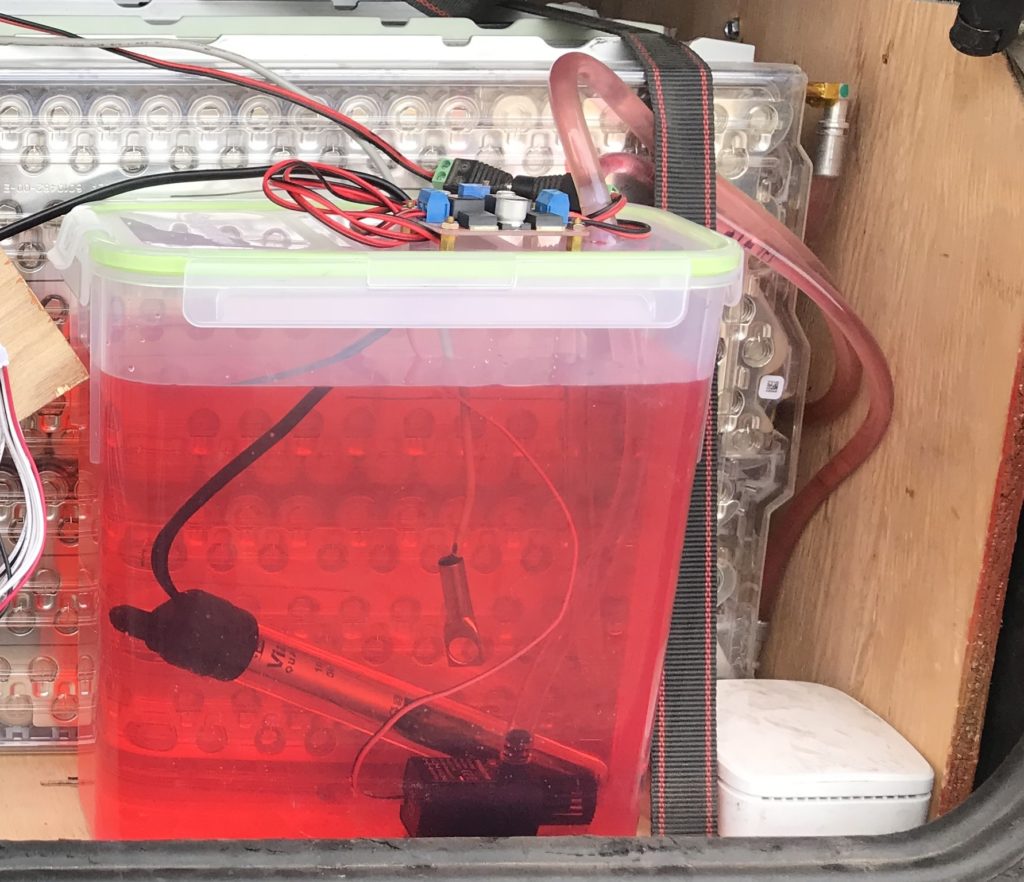Tesla battery
With 5 Tesla Modules from a Model S car is 20 kWh of useful electric storage available, 4 times the useful storage of 8 Lead Acid batteries. The space taken for the current batteries is the same as 8 Golf Cart batteries, but only weight 300 pounds compared to 530 pounds for similar volume of Lead Acid batteries. The Engine batteries have been moved to a rack above the house batteries.

Using Tesla Modules in a Motorhome that was designed for 12 Volt House batteries cause some redesign. The original solenoid that connected the House and Engine Batteries have been removed, we cannot jump start our self any longer. The lights, sensors and many other things in the Motorhome require 12 Volt so a Samlex DC to DC converter with a 60 Ampere capacity has been installed to provide 12 Volt power, an added benefit of this is very stable 13.6 Volt during float, charging and discharging.

Starting the Generator and using the Hydraulic Leveling System use more than the 60 Ampere provided by the Samlex DC to DC converter. The Engine Batteries are used for these short and intensive loads. To start and run the generator is a manual switch required to be turned because of the way the wiring in the Motorhome was done. We only use the generator once a month for exercise, so this is not a big deal.
The Tesla Modules is similar to a 24 Volt Battery, but the Volt is on the low side. The operating range for the battery is from 25.2 Volt to 19.8 Volt. This works well with Magnum 24 Volt Inverters that has a 20 Volt low cut-off. If Lithium batteries are charged to the maximum capacity is the life-span reduced. We only charged to 24.1 Volt from the Solar Controllers and 24.2 Volt from the Inverter/Charger when it is used on rare occasions. Both Solar and Charger is using a CC/CV (Constant Current/Constant Voltage) algorithm, Lithium batteries do not have a Float voltage.
The Tesla battery cells have an almost linear relation between the State of Charge (SoC) and the Volt. This makes it very easy to estimate the SoC and also to use only a range of the capacity. If charged to full capacity is a Lithium cell degraded faster. To maintain a longer life is 80% SoC to 4% SoC used for the operating range 24.1 Volt to 20 Volt. This reduces the useful capacity from 5.3 kWh per module to around 4 kWh (5.3 kWh * (24.1 Volt – 20 Volt )/(25.2 Volt – 19.8 Volt)). With 5 Modules are mounted in parallel is a total of 20 kWh of useful storage available.

With around 99% charge efficiency and very bad behavior above 4.2 Volt per cell is it very important to balance the individual cell modules often. The Battery Medic device is connected to the seven balancing wires. When a module is above 24 Volt is the Battery Medic actively balancing by using a small resistor to lower the volt on the high cells more than 0.01 volt higher. This ensures that during full charge is a small amount of energy used, but during discharge is no energy wasted.

Lithium batteries, in general, is operating with very low heating during charge or discharge when used as House batteries. But it is essential to keep the batteries above freezing temperatures when charging. Tesla Modules have built-in tubing that is touching each cell.

Glycol (RV Anti-Freeze) is being circulated with a 240 GPH aquarium pump through all the batteries in series. A 50 Watt aquarium heater ensure that if the temperature of the Glycol drops below 75 Fahrenheit is the circulating fluid heating the battery. We have been staying for weeks at freezing temperatures and the temperature of the battery box never dropped below 60 Fahrenheit on the coldest nights. The Battery box also has a 1/4″ Plywood on the sides for insulation, both temperature, and electric.